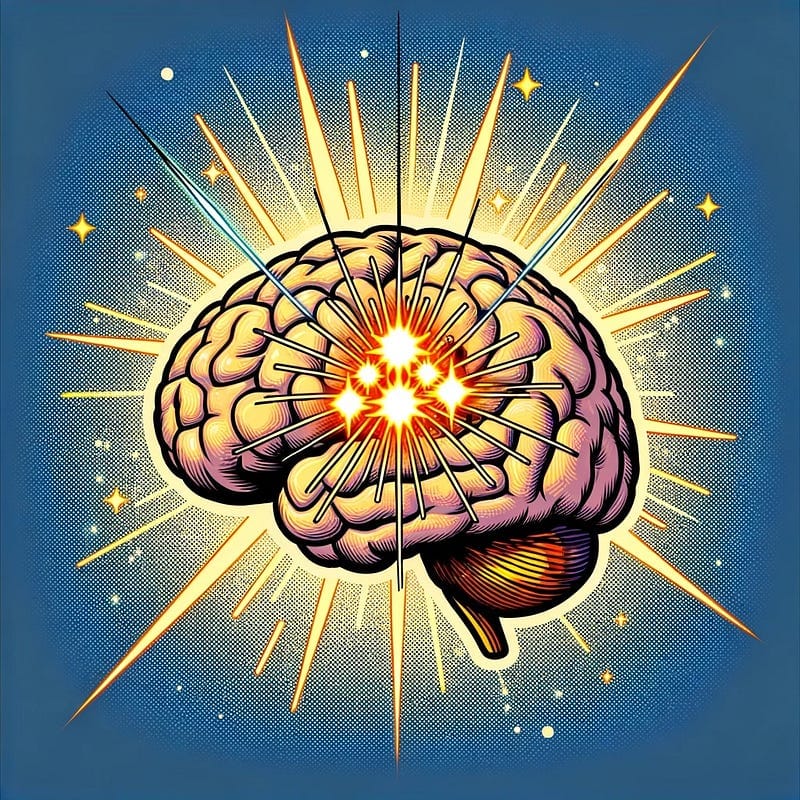Harnessing the Power of the Reticular Activation System and Manifestation

In the vast landscape of the human brain, a small but mighty structure known as the Reticular Activating System (RAS) plays a pivotal role in how we perceive the world and pursue our goals. This intricate network of neurons acts as the gatekeeper of information, deciding what details reach our conscious mind and which remain in the background. Understanding the RAS not only enlightens us about basic brain functions but also opens up exciting possibilities for personal development and manifestation.
Manifestation, the art of bringing desired experiences and outcomes into reality through focused thought and intention, has gained widespread popularity as a tool for personal empowerment. At the heart of this practice is the belief that by concentrating our thoughts and energies on specific goals, we can influence the course of our lives. This is not just wishful thinking; it is grounded in the concrete workings of the RAS, which filters the endless stream of sensory input and highlights what is most relevant to our interests and desires.
The RAS ensures that only the most pertinent pieces of information make it to our conscious awareness, thus playing a crucial role in how we interact with the world. For example, when you decide to buy a new car and suddenly start noticing the model you like everywhere, it’s not because these cars have suddenly appeared more frequently. Instead, your RAS has been tuned to recognize and prioritize this specific information, aligning your external environment with your internal focus.
By learning how the RAS operates, we can begin to consciously influence what we focus on. This understanding enables us to harness the power of our attention and direct it towards creating the life we want. Whether it’s achieving career success, improving personal relationships, or fostering personal growth, the RAS stands as a powerful ally in manifesting our deepest desires.
In the upcoming sections, we will delve deeper into the mechanics of the RAS, explore its connection with the practice of manifestation, and offer practical advice on how to engage this brain system to achieve remarkable changes in our lives. This journey will not only enhance your understanding of your own brain but also empower you to shape your reality in ways you’ve only imagined.
Understanding the Reticular Activating System
The Reticular Activating System (RAS) is a crucial yet often overlooked component of the brain, integral to our consciousness and attention. Located in the brainstem, the RAS is a network of interconnected neurons that extends from the medulla into the thalamus. Its primary function is to regulate wakefulness and sleep-wake transitions, serving as a central hub for processing sensory signals and managing the flow of information to the brain.
Imagine sitting in a busy café trying to read a book. Despite the cacophony of background noise — people chatting, the clatter of cups, background music — your RAS allows you to focus on the words on the page while filtering out irrelevant stimuli. This selective attention ensures that only the most crucial sensory information reaches your conscious awareness. Neurologically, the RAS prioritizes stimuli that are new or changing, which are often crucial for survival and interaction with our environment.
Further emphasizing its role, the RAS also enhances the brain’s readiness to respond to stimuli. This function is vital not only for basic survival but for higher-level functions like learning and critical thinking. By modulating the activity of the cerebral cortex, it influences our mental state, ensuring that we remain alert and attentive when necessary. In essence, without the RAS, the ability to focus, remain conscious, or even engage in complex thought would be compromised, dramatically affecting our interaction with the world.
The RAS and Conscious Focus
The relationship between the RAS and conscious focus is profound. This brain system plays a significant role in determining what information is important enough to reach our consciousness. Essentially, it acts like a filter or lens, shaping our perception based on what we focus on. This mechanism explains why when you learn a new word, you suddenly start seeing it everywhere. It’s not that the word is appearing more frequently; rather, your RAS is now attuned to this word and brings it to your conscious attention.
This ability to filter and prioritize information based on relevance is pivotal for goal setting and achievement. When we set a goal, we direct our RAS to highlight information, opportunities, and actions related to that goal. This selective attention can significantly impact our success by making us more aware of opportunities that align with our objectives.
Moreover, the RAS plays a critical role in reinforcing learning and behavior. When we repeatedly focus on certain ideas or behaviors, the RAS begins to recognize these as important, making us even more likely to notice and engage with related stimuli. Over time, this process can change the way we think and behave, making it a powerful tool for personal development.
Manifestation and the RAS
The concept of manifestation — turning thoughts and desires into reality — relies heavily on the RAS’s ability to filter and prioritize information. By focusing intensely on specific goals or desires, we essentially ‘program’ our RAS to make us more aware of events, people, and opportunities that align with those goals. This phenomenon is not mystical but a practical utilization of our brain’s inherent functionalities.
For example, if someone repeatedly visualizes themselves succeeding in a professional endeavor, their RAS becomes finely attuned to detect helpful information, resources, and networking opportunities they might otherwise overlook. This heightened awareness can lead to actions that will help turn their visualizations into reality. It’s akin to setting a GPS destination in your car; once the destination is set, the GPS highlights the route, ignoring irrelevant paths while focusing on the right turns to reach the desired location.
This targeted focus can significantly enhance one’s ability to achieve goals. The RAS doesn’t just help us see opportunities; it also keeps us mentally and physically prepared to act on them, enhancing our ability to take steps that align with our deepest aspirations. This aligns with the principles of cognitive-behavioral therapy, where altering our thoughts to focus on positive outcomes can lead to real changes in behavior and situation.
Practical Ways to Engage the RAS in Manifestation
Harnessing the power of the RAS for manifestation involves intentional practices that can align our subconscious processing with our conscious goals. Effective techniques include visualization, affirmations, and strategic goal-setting. These practices work by consistently sending specific, focused messages to the RAS, which then prioritizes information that aligns with those messages.
Visualization involves creating a vivid mental image of achieving your desired outcomes, engaging all senses to enhance the experience. This technique is effective because the brain, particularly the RAS, often does not distinguish between real and vividly imagined experiences. By regularly visualizing success, the RAS starts to treat these visualizations as a filter for processing daily information, highlighting opportunities that can make the visualized outcomes a reality.
Affirmations are another powerful tool. By repeatedly affirming our goals as if they have already been achieved, we fine-tune the RAS to recognize and respond to stimuli related to these goals. This repetitive practice reinforces our focus and permeates our conscious perception, making us more likely to act in ways that align with our affirmations.
Strategic goal-setting works by clearly defining what we want to achieve, breaking down these goals into specific, manageable tasks. This clarity allows the RAS to operate more efficiently, focusing on relevant information and discarding what is irrelevant. By setting precise, measurable objectives, we enhance our ability to notice and seize opportunities that are pertinent to our goals.
Journaling can also be an effective way to engage the RAS. Writing down goals, experiences, and reflections not only clarifies our thoughts but also creates a feedback loop for the RAS, making it more likely to identify useful information in our environment. This practice keeps our goals at the forefront of our mind, continuously reminding the RAS of what needs attention.
Lastly, maintaining a routine that supports these practices can fortify their effects. Regular meditation, for instance, can train the RAS to manage stress and maintain focus, creating a mental environment where intentional thought can flourish. This regular, mindful practice helps keep the RAS and the entire neural network attuned to the nuances of our goals and aspirations.
Each of these techniques can be seen as a way to consciously program the RAS, turning it into an ally that tirelessly works to bring our deepest desires into our lived reality. By understanding and applying these strategies, we can significantly enhance our ability to manifest our goals, leveraging the innate power of our brain to shape our experiences and outcomes.
The Reticular Activating System is more than just a passive conduit of sensory information; it is an active participant in shaping our perception and experiences. By understanding and engaging the RAS through focused attention and intention, we can manifest significant changes in our lives. Whether it’s achieving professional success, improving personal relationships, or fostering personal growth, the principles outlined in this article offer practical steps for anyone looking to harness the power of their brain to achieve their desires.
By employing techniques like visualization, affirmations, and strategic goal-setting, we can program the RAS to spotlight opportunities and information that propel us toward our goals. The journey of mastering this aspect of brain function is not only about achieving specific outcomes but also about deepening our understanding of how profoundly our minds influence our reality. Armed with this knowledge, we are better equipped to navigate life’s challenges and transform our dreams into tangible achievements.



